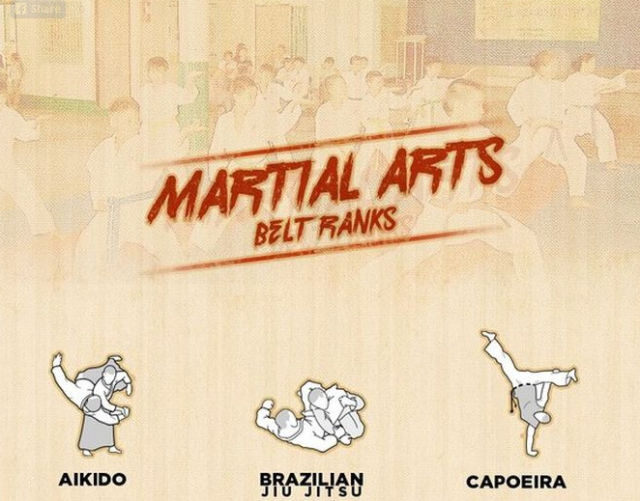Discovering The Rich Heritage And Spiritual Dimensions Of Martial Arts
Discovering The Rich Heritage And Spiritual Dimensions Of Martial Arts
Blog Article
Composed By-Ryberg Montoya
Step into the ancient globe where martial arts were born out of necessity in varied areas. Cultures crafted unique fighting styles linked with historical contexts. Techniques evolved over centuries via committed technique and social exchanges. Today, modern-day martial arts blend typical elements for optimal effectiveness. Philosophically, martial arts highlight discipline, self-improvement, and harmony. Click On this page , humility, and equilibrium are foundational concepts directing experts in the direction of development and durability. Check out the midsts of this rich background and approach to discover the extensive influences forming this long-lasting discipline.
Origins of Martial Arts
Fighting style originated in different areas around the globe, progressing as useful battle systems to resist dangers. These ancient fighting designs were created out of need, with each society crafting methods fit to their special atmospheres and difficulties. From the grappling arts of Jujutsu in Japan to the striking techniques of Martial art in China, martial arts were deeply intertwined with the historical, social, and social textile of their respective cultures.
In Japan, the samurai course polished martial arts like Kenjutsu, the art of the sword, which later progressed into the much more popularized type of Kendo. Meanwhile, in Brazil, Capoeira became a mix of dancing and battle, produced by enslaved Africans as a means to stand up to fascism. Each martial art carries with it an abundant history and philosophy, mirroring the worths and ideas of individuals who practiced them.
As you look into the origins of martial arts, you uncover a tapestry of human ingenuity, resilience, and the unyielding spirit of warriors throughout time.
Evolution of Strategies
Through centuries of practice and refinement, combat techniques within numerous martial arts have actually undertaken an extensive evolution. From old styles like Kung Fu and Martial arts to a lot more modern-day self-controls such as Brazilian Jiu-Jitsu and Krav Maga, the advancement of methods has been driven by a combination of cultural influences, sensible applications, and technological innovations.
One significant facet of this advancement is the cross-pollination of techniques in between different martial arts. As an example, techniques from standard Japanese Jiu-Jitsu were incorporated into the development of Judo by Jigoro Kano in the late 19th century. This mixing of designs has led to the growth of hybrid martial arts like Mixed Martial Arts (MIXED MARTIAL ARTS), which incorporate components of striking, grappling, and submission methods.
Moreover, https://claytonucjqx.wssblogs.com/26541077/uncovering-numerous-combating-strategies-a-journey-via-martial-arts-jiu-jitsu-and-beyond of techniques has actually been formed by the enhancing focus on performance and effectiveness in combat. Specialists have actually constantly sought to refine their methods with rigorous training, trial and error, and competitors, resulting in the advancement of highly specialized and efficient fighting styles. On the whole, the development of techniques in martial arts reflects the dynamic nature of fight and the recurring mission for improvement and technology.
Philosophical Structures
Exploring the underlying thoughtful principles of martial arts gives understanding right into their core values and guiding ideas. At the heart of many martial arts self-controls is the idea of technique itself. By educating your body and mind to work as one cohesive system, you cultivate technique that prolongs beyond the dojo or fitness center right into everyday life. This discipline incorporates respect, humbleness, and self-constraint, shaping not just your physical capabilities yet likewise your personality.
An additional essential philosophical structure in martial arts is the concept of continual self-improvement. The trip of grasping a fighting style is perpetual, with professionals frequently aiming to better themselves, both physically and emotionally. This concentrate on growth promotes resilience, willpower, and a growth state of mind that can be related to all facets of life.
Furthermore, martial arts highlight the value of harmony and balance. Methods are developed to make use of an opponent's energy versus them, highlighting the concept of generating and redirecting force rather than meeting it head-on. This viewpoint includes social connections, promoting serene resolutions and good understanding. By welcoming these philosophical structures, martial musicians not just improve their battle abilities yet likewise grow a lifestyle centered on personal development, regard, and consistency.
Conclusion
To conclude, the background and ideology of martial arts provide a rich tapestry of practice, technique, and self-improvement.
Consider example the story of Bruce Lee, that transformed martial arts by mixing different designs and philosophies to create his own unique type of Jeet Kune Do.
Through dedication and advancement, martial artists remain to push boundaries and influence others to reach their complete capacity both in battle and in life.
